Honduras Diving: Exploring Cayos Cochinos (aka the Hog Islands)
PADI Divemaster Sascha Zuger is enticed by Honduras' Bay Islands not because of their beaches or bars, but because they’re home to the world’s second-largest reef system and the idyllic, little-known Cayos Cochinos (Hog Islands).
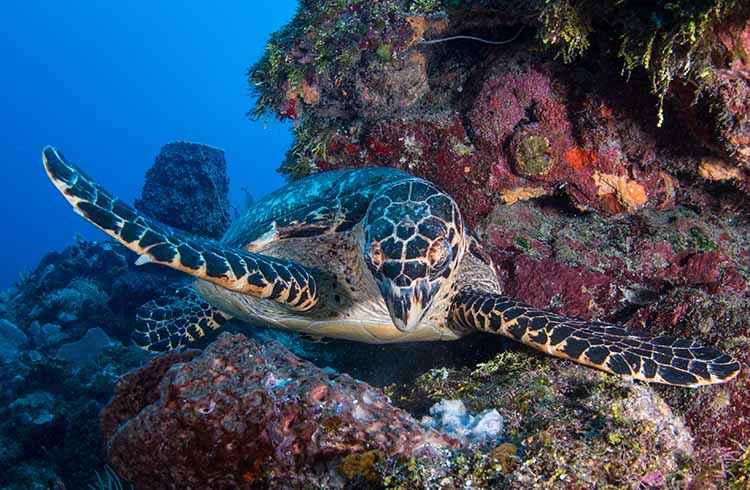 Photo © Getty Images / Brandi Mueller
Photo © Getty Images / Brandi Mueller
As recently as 20 years ago, visitors to Roatan would have enjoyed deserted white sand beaches and pristine reefs. Today, the 10mi2 (50km2) island, off the coast of Honduras, is one of the busiest cruise ship destinations in the world, ushering in more than a million passengers a year. I quickly realize my dreams of the untouched Meso-American Barrier Reef will require a day trip to Cayos Cochinos, aka the Hog Islands. We set sail for our 25mi (40km) journey accompanied by a pod of frolicking spinner dolphins – surely an auspicious start.
Seamounts of Cayos Cochinos
It’s a real treat to stop en route for a snorkel, or advanced dive, seemingly in the middle of the ocean – 45 minutes by powerboat or a few hours by leisurely sail from Roatan. Seamounts are underwater mountains, jutting up more than 3,280ft (1,000m) from the ocean floor, stopping just short of breaking the surface and earning the title of “island”. The topography creates currents awash with plankton, attracting open-seafaring creatures including rays, sharks, and sportfish, as well as a protected habitat so remote that many species are endemic, existing only in this microcosm.
We tie up to a mooring line to protect the fragile system, and back-roll from the boat into paradise. Dropping to 100ft (30m) we’re rewarded with schools of horse-eye jack and barracuda feasting on shimmering silversides. Nearby, dinner-plate-sized Atlantic spadefish flash their zebra stripes as they feed on plankton in the water column. The mountain’s pinnacle drops off into deep-blue fathoms, and ridges covered in pink sea fans and coral nooks.
Streams of violet-blue creole wrasse swirl around a coral pillar as we move toward the shallows below the snorkelers. Their exclamations echo down as they point at a sea turtle popping up for a breath. Nosing over the edge of the ridge, a docile, inquisitive nurse shark greets us as we reluctantly return to the sailboat and continue on to the Hog Islands.
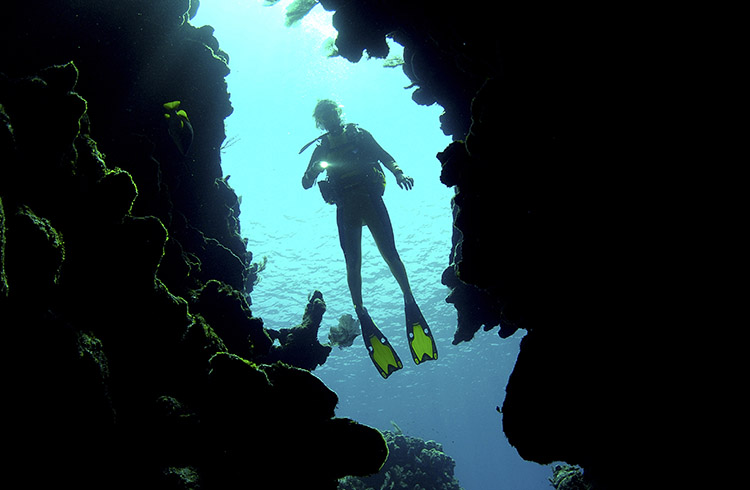
Cayo Grande
Soon, Cayo Grande comes into view, the largest of the two main islands (plus 13 tiny coral islets). Lush greenery covers a large hill edged by a golden beach. As our boat nears, several cayucos (hand-carved wooden boats) head our way, one with a makeshift sail to harness the sea breeze. Smiling locals offer goods for sale – hand-rolled cigars, carefully wrapped, fresh coconut bread – and an invitation to visit their village. The Cayos archipelago doesn’t have any cars, roads, or bikes and is home to 100 inhabitants, most Garifuna (descendants of Carib Indians and Africans) who live simply without running water or electricity.
We land on the beach and hike through a jungle that’s home to the world’s only pink boa constrictors. Although we don’t spot the rare creatures, from the summit lighthouse we can clearly see Cayo Menor across the bay, where a research center, supported by non-profits including the renowned Smithsonian Institute and World Wildlife Fund, offers a base for visiting scientists.
We wander over to Cayo Chachahuate for a bite and a chat with the islanders. This sand-spit village of palm-thatched roof huts and hammocks offers some of the only overnight accommodations on Cayos. We sip Salva Vida beers as our hand-line-caught snappers and plantains are fried to order.
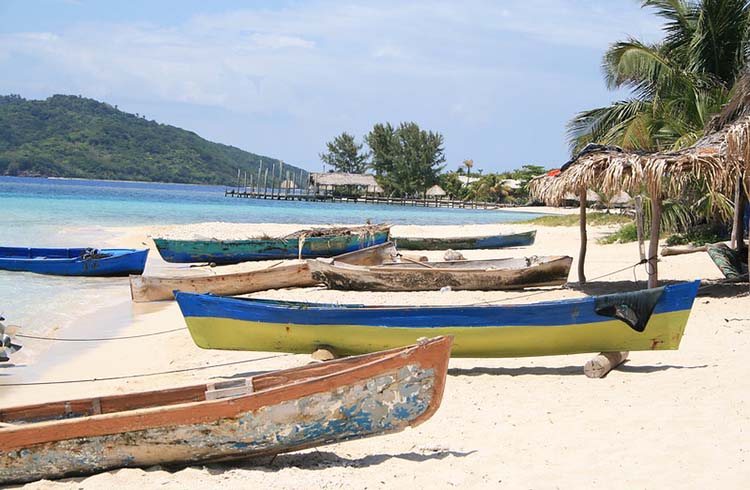
Swimming with a whale shark
After a dive off Cayos Grande – where we spot sea turtles, lobsters, eagle rays, soft corals, and century-old purple barrel sponge – we head back to Roatan. As we’re dozing in the salt spray and sun, the boat slows. The captain motions to the crew – a straight hand to his forehead, then arms as wide as his smile. They rush for confirmation and hustle us into our fins and masks. We’ve happened upon the world’s largest fish, the whale shark, tipping the scales at 41,000lbs (6,350kg), and up to 60ft (19m) long.
As the captain positions us in the shark’s path, we slip into the water, equally thrilled that we have encountered the rare, gentle giant and that, as a filter-feeding shark, we are entirely off its menu. The slow-moving creature glides along next to us. We keep a safe, 9ft (3m) distance and stay calm to avoid spooking it into a dive, its steady gaze and striking spots and stripes seared into our memory. The sheer enormity of the creature, after a day already filled with otherworldly adventures, leaves us in awe as we quietly reboard the boat. The captain offers to drop in lines to fish on the final stretch home, but we decline. The sea has already given us more than we could ever want.
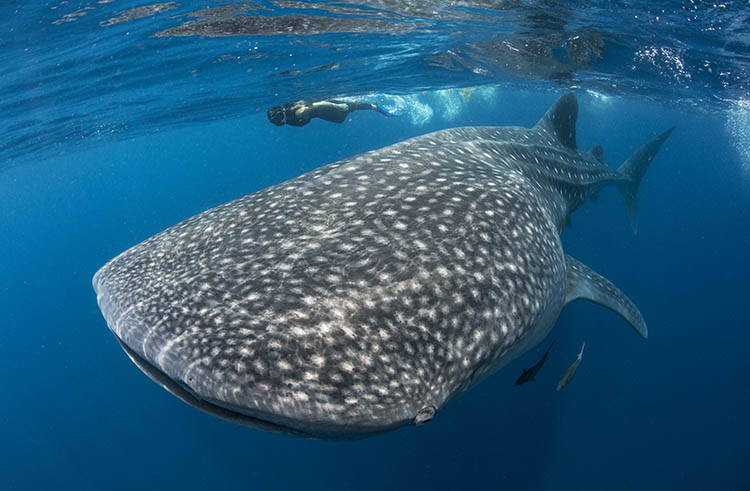
Trip Notes
Day trips
Note, sea conditions must be ideal/near flat for most boats to comfortably make the trip.
A variety of operators in Roatan offer sailing and powerboat tours, with activities including scuba diving, snorkeling, fishing, and visits to Chachahuate village. Trips average 8.5 hours and typically include lunch, drinks, and snacks. Prices range from US $135-180.
Related articles
Simple and flexible travel insurance
You can buy at home or while traveling, and claim online from anywhere in the world. With 150+ adventure activities covered and 24/7 emergency assistance.
Get a quote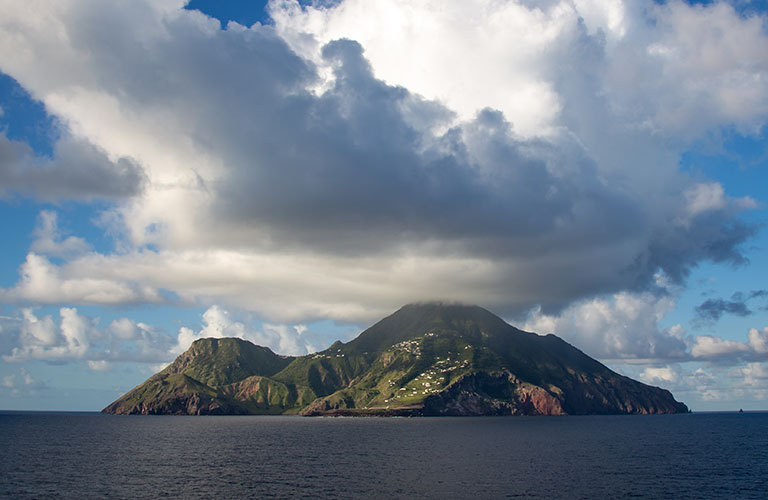
1 Comment
Great review. Beautiful photos. Thanks for sharing!